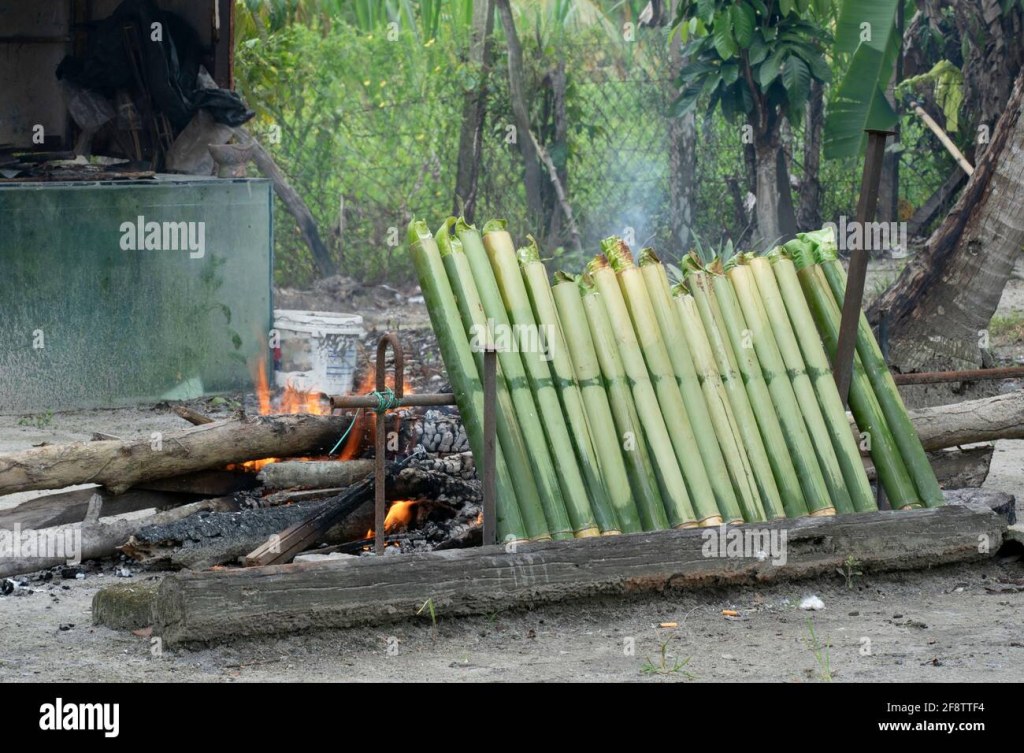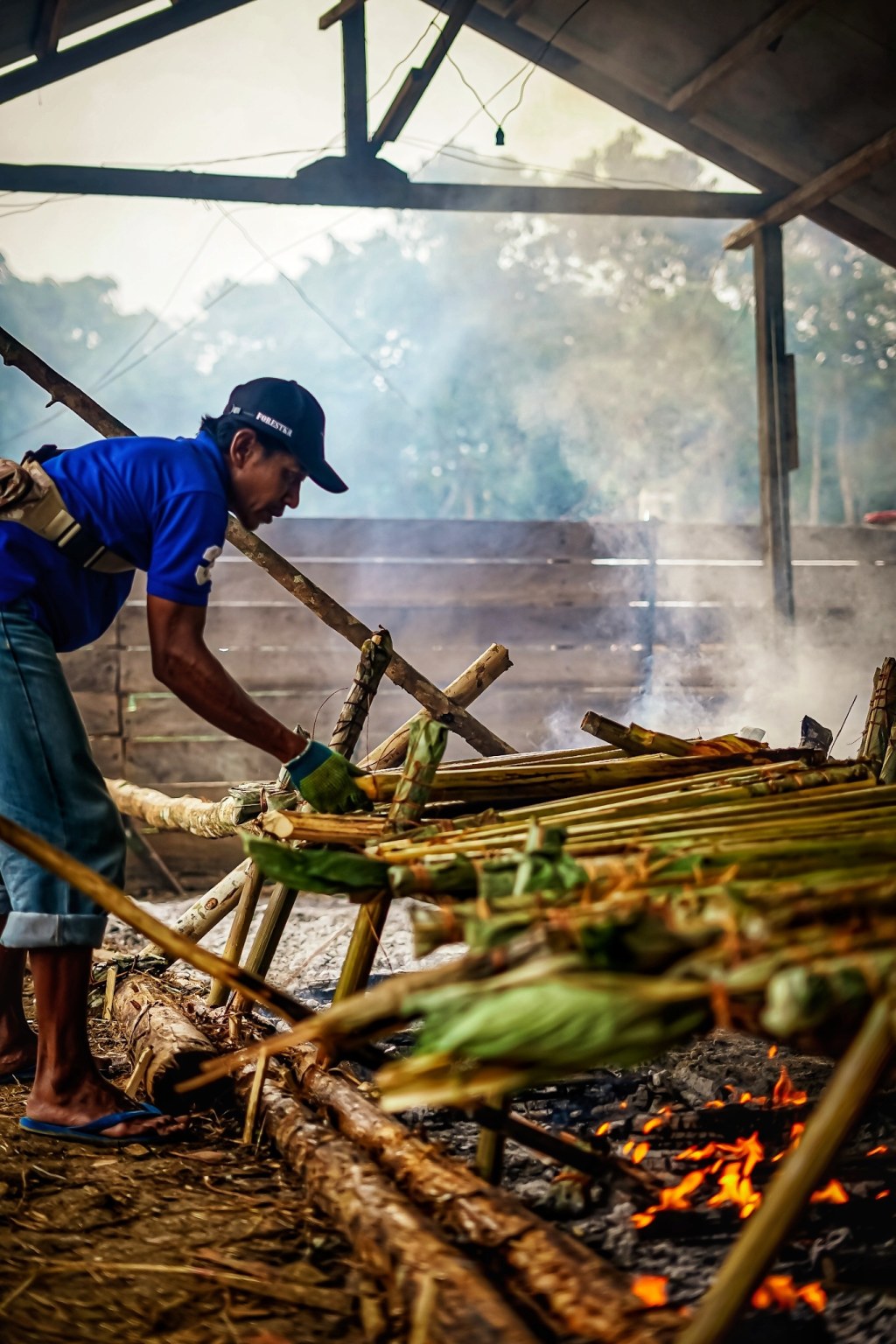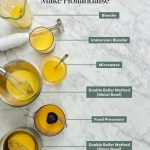The Ultimate Guide To Master The Cooking Method Lemang – Unleash Your Culinary Skills Now!
Cooking Method Lemang: A Traditional Malaysian Delicacy
Welcome, dear Readers, to our article on the cooking method of lemang. In this piece, we will explore the traditional Malaysian cooking technique used to create this mouthwatering delicacy. Lemang is a popular dish made from glutinous rice, coconut milk, and pandan leaves, cooked in bamboo tubes. Its unique cooking method gives it a distinctive taste and texture that has captivated locals and tourists alike. Join us on this culinary journey as we uncover the secrets behind this beloved Malaysian dish.
Introduction
Lemang holds a special place in Malaysian cuisine as it is commonly associated with festive occasions and celebrations, especially during Hari Raya Aidilfitri. This fragrant and flavorful dish has become a staple on dining tables across the country. The cooking method of lemang involves stuffing the bamboo tubes with a mixture of glutinous rice, coconut milk, and pandan leaves, before grilling them over an open fire. The result is a deliciously aromatic and slightly smoky rice cake that pairs perfectly with savory dishes such as rendang or curry.
3 Picture Gallery: The Ultimate Guide To Master The Cooking Method Lemang – Unleash Your Culinary Skills Now!



Lemang is not only a culinary delight but also a symbol of togetherness and tradition. The preparation process often involves family members and friends coming together to create this communal dish. It is a testament to the rich cultural heritage of Malaysia and the importance of food in bringing people together. Now, let us delve deeper into the specifics of the cooking method of lemang.
What is Lemang?
Lemang is a traditional Malaysian dish made from glutinous rice, coconut milk, and pandan leaves. The ingredients are mixed together and stuffed into bamboo tubes, which are then grilled over an open fire. The cooking process infuses the rice with the flavors of the coconut milk and pandan leaves, resulting in a fragrant and sticky rice cake.
How is Lemang Prepared?
To prepare lemang, the first step is to soak the glutinous rice in water for several hours to soften it. Meanwhile, the bamboo tubes are cleaned and coated with banana leaves to prevent the rice from sticking to the sides. The soaked rice is then mixed with coconut milk and pandan leaves, which add a subtle sweetness and aroma to the dish.

Image Source: alamy.com
Once the rice mixture is ready, it is carefully stuffed into the bamboo tubes, ensuring that they are filled to the brim. The ends of the tubes are sealed with banana leaves or aluminum foil to prevent any steam from escaping during the cooking process. The lemang-filled tubes are then placed over a hot charcoal fire and left to cook slowly for several hours.
Throughout the cooking process, the rice absorbs the flavors of the coconut milk and pandan leaves, resulting in a rich and aromatic dish. The bamboo tubes also impart a smoky flavor, adding another layer of complexity to the taste of the lemang. The slow cooking ensures that the rice is evenly cooked and has a sticky yet tender texture.
Who Invented Lemang?
Lemang is believed to have originated from the indigenous communities of Malaysia, particularly the Orang Asli. These communities have been using bamboo as a cooking vessel for centuries, harnessing the natural properties of the bamboo to create delicious and unique dishes. Over time, the lemang cooking method has been passed down through generations and has become an integral part of Malaysian cuisine.
When is Lemang Served?
Lemang is commonly served during festive occasions and celebrations in Malaysia, such as Hari Raya Aidilfitri. It is often enjoyed alongside other traditional dishes like rendang, satay, and ketupat. The dish holds a special significance during these festive periods, symbolizing unity and abundance.
Where Can You Find Lemang?
Lemang can be found throughout Malaysia, particularly in rural areas and traditional markets. During festive seasons, you can even find roadside stalls and bazaars dedicated solely to lemang. These stalls often prepare and sell lemang on the spot, allowing customers to experience the freshly cooked dish.
Why is Lemang Popular?

Image Source: wikimedia.org
Lemang’s popularity stems from its unique taste and cultural significance. The combination of sticky glutinous rice, fragrant coconut milk, and smoky flavors make it an irresistible treat. Additionally, the communal aspect of preparing and sharing lemang during festive occasions adds to its appeal. The dish has become synonymous with togetherness and celebration, making it an essential part of Malaysian culinary heritage.
How to Make Lemang at Home?
While the traditional way of making lemang involves grilling the bamboo tubes over an open fire, it is also possible to recreate this dish at home using modern equipment. Instead of bamboo tubes, you can use aluminum foil or even cake pans lined with banana leaves to achieve a similar effect. The rice mixture can be steamed instead of grilled, although it will lack the smoky flavor imparted by the bamboo tubes. Regardless of the cooking method, lemang is a delightful dish that is worth the effort.
Advantages and Disadvantages of Cooking Lemang
Advantages:
Rich flavor and aroma.
Symbolizes unity and togetherness.
Can be made in large quantities for gatherings.
Uses simple and readily available ingredients.
Adaptable cooking method for home preparation.

Image Source: theborneopost.com
Disadvantages:
Requires a significant amount of time to prepare and cook.
Can be labor-intensive, especially when preparing large quantities.
Traditional method requires access to bamboo tubes and an open fire.
May not be suitable for those with dietary restrictions or allergies.
Difficult to achieve the same smoky flavor without grilling over an open fire.
Frequently Asked Questions (FAQs)
Is lemang gluten-free?
No, lemang is not gluten-free as it is made from glutinous rice, which contains gluten.
Can I substitute regular rice for glutinous rice?
No, glutinous rice is essential for achieving the sticky texture of lemang. Regular rice will not yield the same results.
Can I freeze lemang?
Yes, you can freeze cooked lemang for later consumption. Simply reheat it in a steamer or microwave before serving.
Can I make lemang without coconut milk?
Coconut milk is a key ingredient in lemang as it provides flavor and moisture to the rice. However, if you have dietary restrictions or allergies, you can explore alternatives such as using dairy-free milk or vegetable broth.
Can I add fillings to lemang?
While traditionally lemang is enjoyed on its own or with savory dishes, you can experiment with adding fillings such as shredded chicken or beef to enhance the flavor.
Conclusion
In conclusion, the cooking method of lemang is a time-honored tradition in Malaysia that produces a flavorful and fragrant rice cake. This dish represents the rich cultural heritage of the country and is often enjoyed during festive occasions. Whether grilled over an open fire or prepared at home using modern techniques, lemang is a true delicacy that brings people together.
Now that you have learned about the cooking method of lemang, why not try making it yourself? Gather your loved ones, explore the local markets for fresh ingredients, and embark on a culinary adventure to create this authentic Malaysian dish. Enjoy the process and savor the delicious results!
Disclaimer: The information presented in this article is based on traditional practices and personal experiences. Please exercise caution and adapt the cooking method to your specific circumstances and preferences.
This post topic: Cooking Techniques

